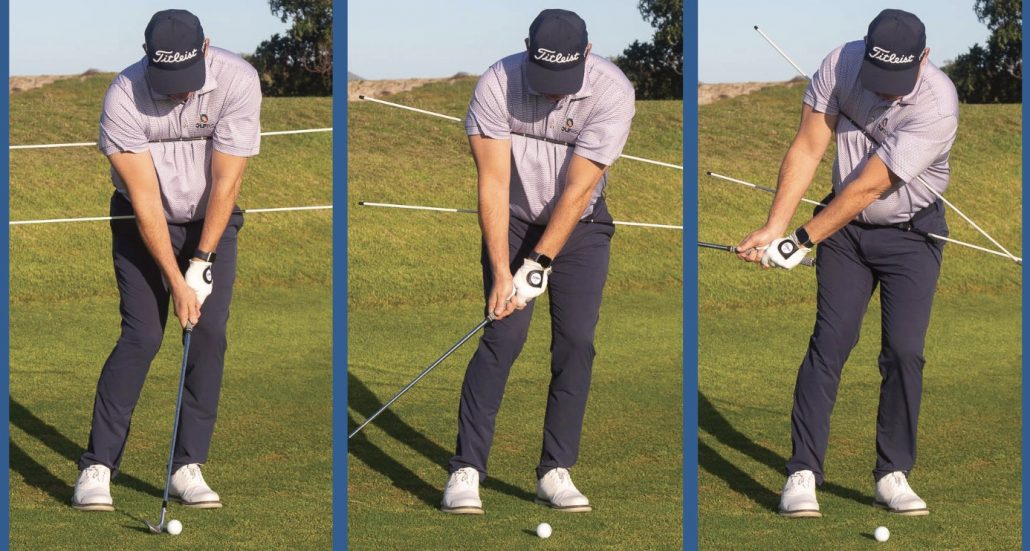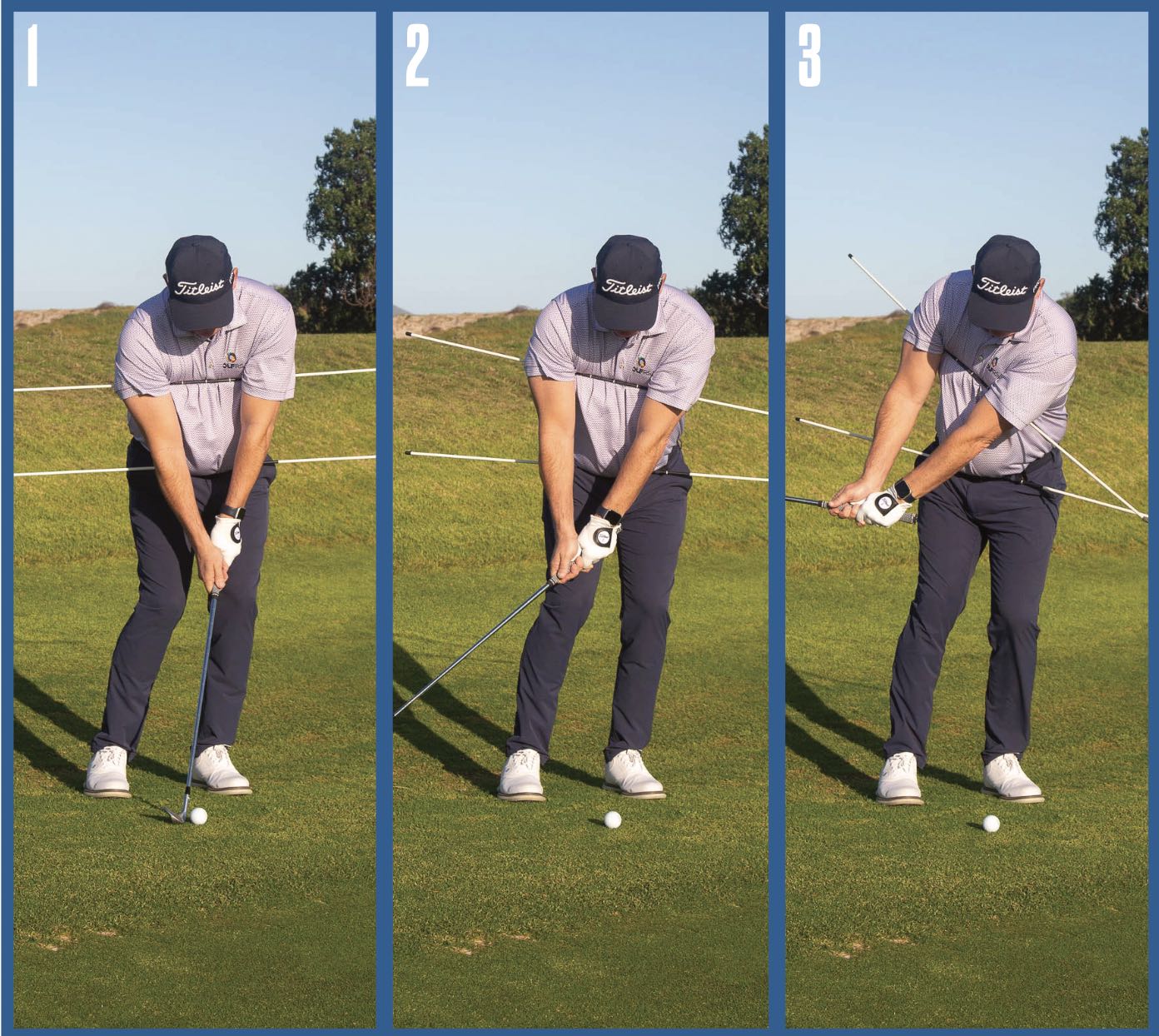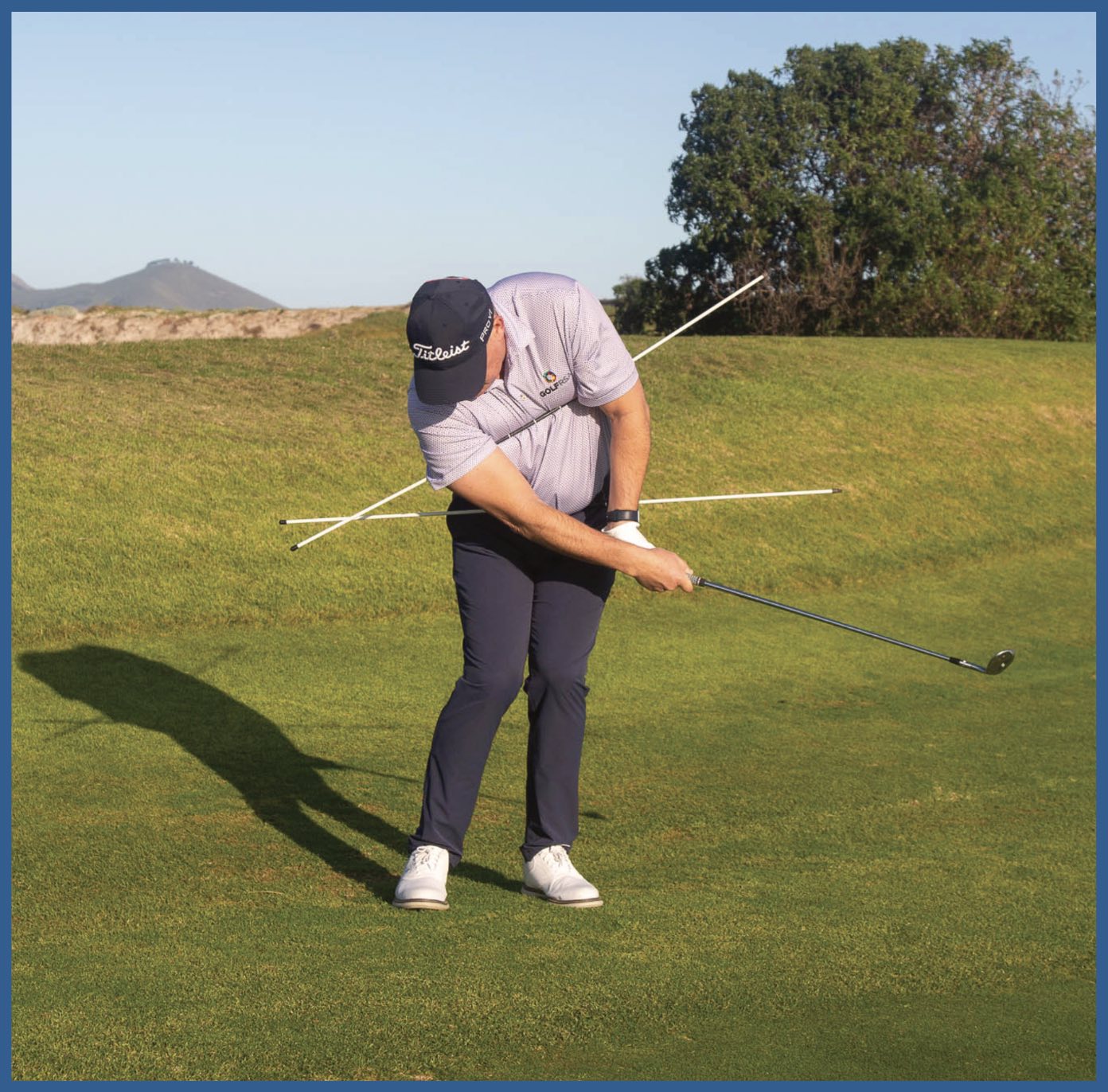PGA professional GRANT HEPBURN demonstrates some of the key concepts in becoming a better chipper around the greens.
In theory, chipping should be one of the easiest parts of the golf game. You’re dealing with a shorter, slower swing than a full swing and you’ve got a lofted club in your hands.
In reality, a lot of people struggle with their chipping precisely because it is not a full-swing shot. In other words it is less mechanical and requires feel, which is something that is difficult to teach or learn. Even really good players have trouble with shots around the green from time to time.
So much chipping instruction centres around keeping your wrists and your body quiet. Not still, but quiet. While all coaches will tell you to use less wrist, leg and body action when playing the shorter chipshots, it is vital that there is some movement and I’ll demonstrate why.
Getting it right
Set up as I have, with the majority of the weight on your left leg (for right-handers), and your hands slightly ahead of the ball. This will encourage a good, clean strike in the downswing.
Now, as I make my backswing, I intentionally leave weight on my left leg and try not to transfer any of my weight to my right side in the takeaway.
In this example, I have two alignment sticks pressed against me and these help show how my body still turns as my arms swing back. My hips turn less than my shoulders, again demonstrated by the alignment sticks under my arms. The key here is that both my hips and my shoulders should be allowed to turn, as the chipshot is not an arms-only movement.
In my downswing, even though I kept my weight on my left side, I want to encourage even more of my weight to flow left, driving towards the target. This allows me to accelerate into the back of the ball, and keeps me from catching the ground first and duffing it.
The crucial part about the downswing is that I allow my body to turn towards the target and to keep turning after the ball is hit, so that my arms can swing towards the target and my weight can finish almost fully on my left side.
Take a look at how both my hips and shoulders face the target at the end of my swing. This allows me to control the clubface and encourages my body and arms to work together, smoothly clipping the ball towards the hole.
Notice how my eyes have followed the ball and my head has been allowed to lift up and forward, to watch the ball.
Getting it wrong
This photo demonstrates a common amateur mistake, where the player uses only his arms to hit the ball. You can see how my body has stopped turning towards the target and my head is still down.
Keeping your head down is actually a deterrent to good chipping, as it stops your body moving and causes a jumpy stab at the ball.
It is way better to allow yourself to watch the ball and for your head to follow the movement of your body as you turn through after hitting the ball.
– This article first appeared in the September 2023 issue of Compleat Golfer magazine.











